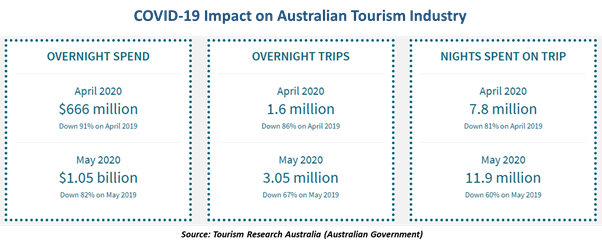- Travel bubbles can potentially rescue hammered travel and tourism industry from the large-scale downturn.
- The concept of travel bubbles was first established in May 2020, when three Baltic countries formulated a trilateral partnership.
- With time, a plethora of travel bubbles has sprouted in countries across Asia and Europe, which are exploring exclusive bilateral agreements to ease border restrictions.
- The second wave of COVID-19 infections budding in Victoria and Auckland has pushed back the plans for trans-Tasman travel bubble until at least end of 2020.
- Risks of bubble burst is also associated with travel corridors if a member country opens up to another nation where COVID-19 risk is high.

With COVID-19 pandemic initiating widespread border closures and leaving thousands of airplanes grounded, the global travel industry has been actively devising means to resume domestic and international travel with appropriate safety measures. Travel bubble is one of these options considered by nations worldwide to salvage battered industry from the large-scale downturn.
The concept of travel bubbles was first established by three Baltic countries, Latvia, Lithuania and Estonia when they formulated a trilateral partnership in May 2020, granting residents of member nations entry into their provinces. Following the trail, two other Baltic states, Slovenia and Croatia also formed a travel agreement in May to enable travel without quarantine restrictions.
Interesting Read! Travel Players Dealing with COVID-19 Crisis: Capital Raising Catches Wave
Peep into Existing International Travel Bubble Arrangements
With time, a plethora of travel bubbles sprouted in countries across Asia and Europe, which are exploring exclusive bilateral agreements to ease border restrictions. The ongoing establishment of travel bubbles seems to be largely driven by the confidence participating countries share over the containment of virus spread in their partner’s domain.
China and South Korea implemented their separate travel corridor in May this year to kickstart revival of their respective tourism industries. The travel bubble is tightly controlled, with movements permitted across selected cities, including Seoul and Shanghai. Besides, the air corridor involves stringent conditions for travelers who must undergo a 2-day quarantine and then a coronavirus blood test upon arrival to China.
May 2020 also observed a tourist border agreement between Norway and Denmark, excluding Scandinavian neighbor, Sweden, reeling from higher cases of coronavirus infections.
Since the end of June 2020, Italy, Spain, Switzerland, Belgium and Germany have also fully opened their borders for tourists from Britain, the European Union and the Schengen Area.
Subsequently, since July 2020, Singapore commenced business travel with around six Chinese provinces, including Chongqing, Guangdong, Jiangsu, Shanghai, Tianjin and Zhejiang. In July, the UK government also approved quarantine-free travel to over 70 countries and overseas territories in Britain.
In addition to these air corridors, Singapore and Malaysia are also planning to reopen their borders in August in one of the first “green lane” arrangements within the ASEAN (Association of Southeast Asian Nations) bloc.
Australia’s ‘Travel Bubble’ Plans
While reopening of Australia’s international borders seems highly unlikely in 2020 post Prime Minister, Mr Scott Morrison’s statement on no plan of overseas travel before 2021, COVID-safe travel corridors can emerge as a rescuer for the hammered travel sector.

For the last few months, Australia has been under discussions with New Zealand (NZ) over the initiation of a trans-Tasman travel bubble between the two countries. While speculations were initially rife over the execution of this travel corridor by September, the second wave of COVID-19 infections budding in Victoria and Auckland has pushed back the plans for the same until at least end of 2020.
NZ PM, Jacinda Ardern recently stated that the prospects of quarantine free travel with Australia seem a long way off amid resurgence of coronavirus cases in Victoria. The latest re-imposition of lockdown in Kiwi Land after the return of COVID-19 cases is further likely to derail NZ’s plans to commence travel corridor with Australia or any other South Pacific countries in 2020.
While the inception of travel bubble with NZ appears to be dubious in the near term, Australians may soon travel Bali possibly by next month as Indonesian officials have been pushing for travel corridor between Australia and Indonesia. Recently, a senior minister of the Indonesian government has strongly backed a travel bubble with Australia, along with South Korea, China and Singapore ahead of Bali’s re-opening plans in September 2020.
Besides, Japan is also preparing to reach an agreement with Taiwan, China, South Korea, along with Pacific partners NZ and Australia for quarantine-free travel.
Must Read! Leaf Through Three Key Factors Defining Travel Space Recovery Scenario
Risks Associated with Travel Corridors
As per International Air Transport Association or IATA, travel bubble or a corridor is a good tool to renew connections between two nations, but it should not be made a permanent practice. IATA believes that permanent travel bubbles can create enormous difficulty in managing various types of corridors, making it hard to dismantle these bubbles when situation turns to normal.
A risk of bubble burst is also associated with travel corridors if a member country opens up to another nation where COVID-19 risk is high. Besides, the bubbles of rich countries can potentially aggravate inequalities with poorer countries, which are excluded from travel corridors.
However, these bubbles still hold considerable potential to unlock the world and get travel sector back on feet, if opened with a sound and sturdy planning.
All in all, high hopes are attached to existing and potential travel bubbles across Australia and rest of the world to restore normalcy and reboot the multi-billion-dollar travel industry. While, much depends on containment of community transmission and second wave of infections that may set the speed of travel sector recovery.
Source: Kalkine Media















